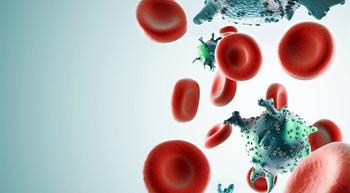
- Spring 2023
- Volume 22
- Issue 1
Art as Cancer Therapy
Art therapy allows patients to figure out how to use art to access emotions and experiences and to externalize them, one expert said.
Art therapy is a type of treatment that uses art as a medium to help patients with cancer promote emotional or physical healing throughout one’s cancer journey. This allows patients to figure out how to use art to access emotions and experiences and to externalize them, one expert said.
It can also be used as a way to incorporate goals for movement and grip strength, which may help improve side effects like neuropathy.
Although some cancer centers offer an art therapy program, some patients may be able to do a modified version of art therapy at home using coloring books, paints, colored pencils and other materials.
“We would guide them to use the art mediums that they are most comfortable with if there’s no art therapist physically present with them,” Calliandra Perry, MA, LLPC, ATR-P, art therapist from Henry Ford Health in Detroit, told CURE.
"That way, we’re not pushing them outside of their comfort zone in terms of making someone use watercolors who has no experience, but we are going to push them to explore their emotions and their experiences by using color, symbolism and different shapes.”
Perry mentioned that doing some form of art therapy throughout a patient’s cancer journey can not only help them work through emotions, but also serve as milestones along the way.
“There’s a lot of (emotions) that patients go through when they’re being diagnosed, going through treatment, living with cancer or if they hit that survivorship phase,” she said. “It’s something that they can explore in a way that almost acts as mile markers for them.”
If patients decide to take the at-home route for art therapy, Perry advised to start slow depending on how comfortable they are with art materials. She mentioned that trying a coloring book first may be a good starting point.
“Some patients are looking to use art as a distraction, where they don’t want to be thinking about their treatments, their medications, the fact that they can’t feel their fingertips, they have issues with their feet or their pain, nausea, anything that they’re feeling,” she said. “(Trying) out a coloring book or scribbling on their own and see if that’s something where they feel the benefit of it, they feel more relaxed. They are able to distract themselves.”
It is important to be mindful of the fact that doing art-related activities at home, although helpful, does not necessarily replace an art therapy program that may be offered at a cancer center.
“Anyone can do art therapy technically from home, but it wouldn’t necessarily be art therapy; it’s art as therapy,” Perry said. “There’s a fine line between how far do we want to push patients to do things on their own and how risky is that if they have (an) emotional breakthrough, and there’s not someone there to process it with them.”
For more news on cancer updates, research and education, don’t forget to
Articles in this issue
almost 3 years ago
Navigating Cancer Test Resultsalmost 3 years ago
‘I Was Winning and the Cancer Wasn’t’almost 3 years ago
Seeking Another Cancer Perspectivealmost 3 years ago
New Myeloma Therapies Are ‘A Huge Improvement for the Field’almost 3 years ago
Falling Into the 'Alice in Wonderland' Google Hole of Cancer Resultsalmost 3 years ago
Going the Distance After a Cancer Diagnosisalmost 3 years ago
Better Nutrition Can Help People With Canceralmost 3 years ago
BTK Inhibitors Offer a Revolutionary Treatment of Relapsed CLL/SLLalmost 3 years ago
Playing the Odds in the Poker Game of Life With Cancer



